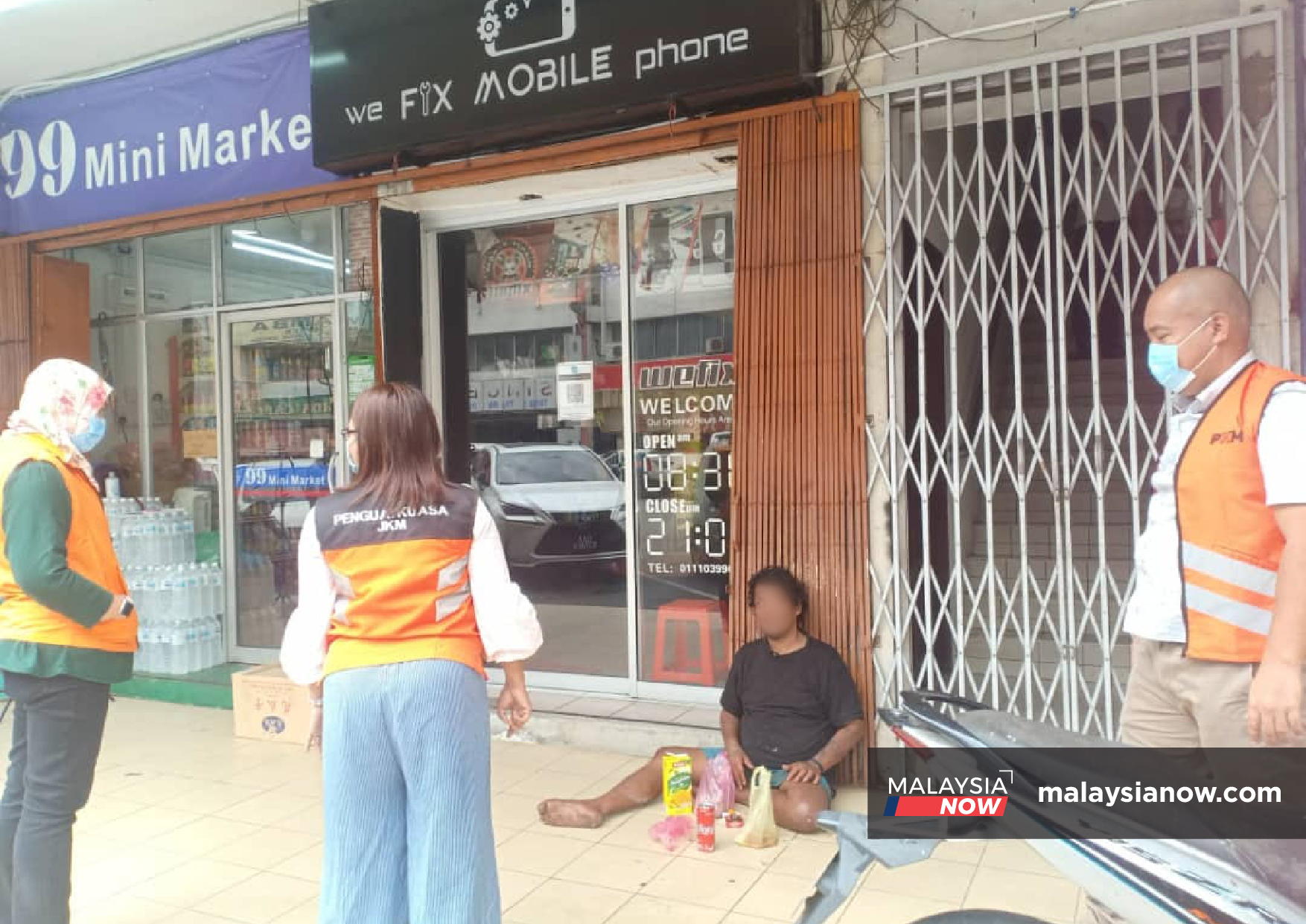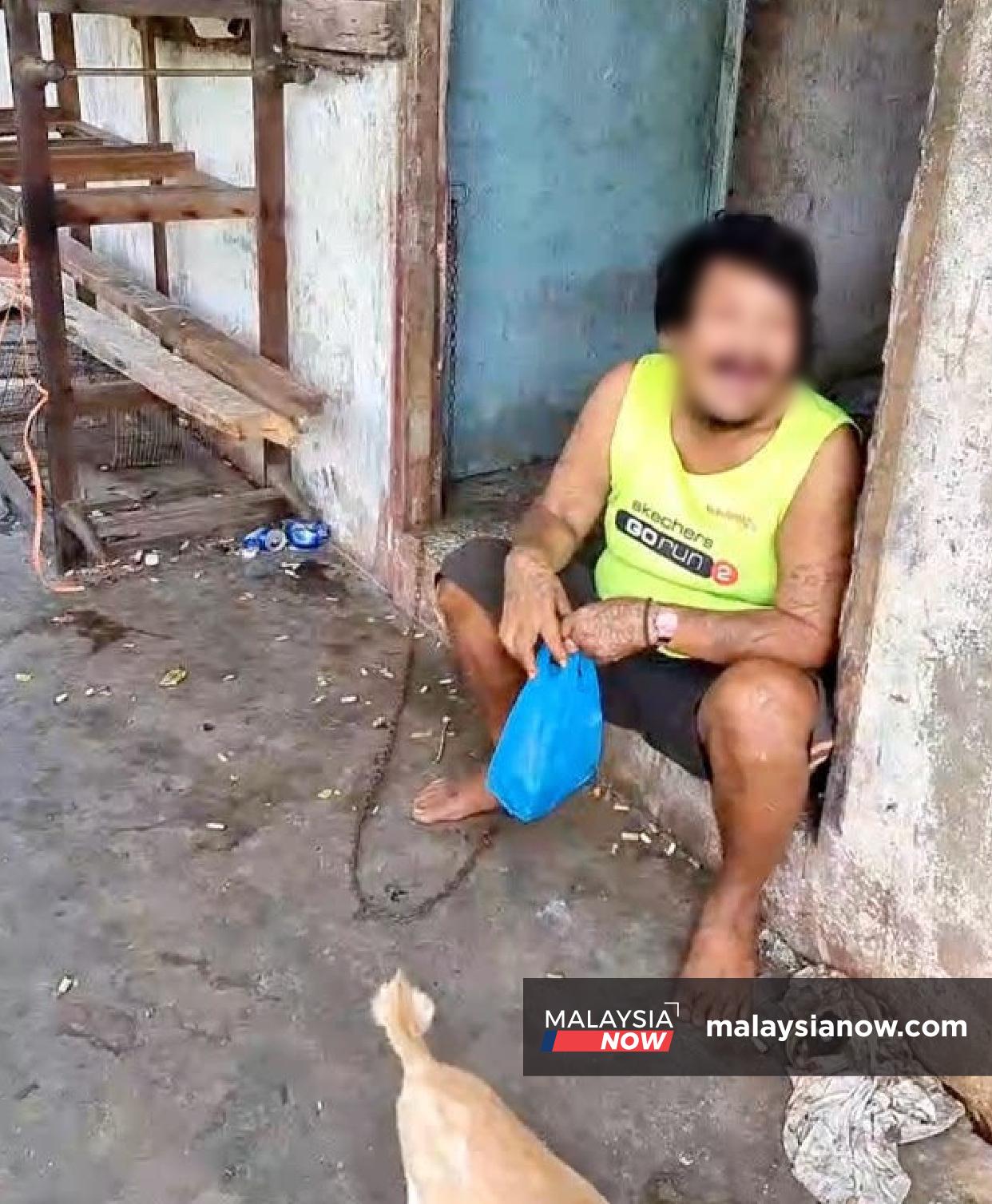Poverty, mental illness keep Sarawak man shackled to the wall
Apui's family has no choice but to keep him chained to a wall of their squatter home in Bintulu.
Just In
Near the doorway of an abandoned house in Bintulu, a man dressed in shorts and a yellow singlet sits with a puppy on his lap and one foot chained to the wall behind him.
Apui (not his real name) lives with his mother and four other squatter families in the ramshackle house in the middle of town.
For months, this has been his daily routine. Most of the time, he sits and talks to himself. Sometimes, he lies down in the doorway and watches the world go by.
There is enough slack in the chain for him to move about, but not more than a metre or two.
Apui is a symbol of the squalor and poverty that characterises large parts of the town.
While Bintulu was once a sleepy fishing village, a flurry of economic activity linked first to the discovery of oil and gas, then to timber, oil palm and the development of heavy industries saw a surge of life.
As the town prospered, though, the gap between the rich and poor grew, and many rural folk who migrated to town in the hope of finding a better life now live as squatters.
Those like Apui who are mentally ill often have it the worst. His mother spends her days selling fruits and vegetables at the local market and her evenings scavenging through rubbish dumps. There is barely enough to put food on the table, much less for medical treatment.
So instead, he sits with his right ankle chained to the house to keep him from running away.
As a child, Apui was like any of the other village children and when he grew older, he helped his parents work for a living.
Over the years, though, he became involved in drugs and his physical and mental health began to spiral.
Now, his family chains him to the house as a measure of last resort.
“They have to chain him up because he is sometimes aggressive and can be violent with people,” activist Francis Ngu Hown Hua told MalaysiaNow.
“They are doing this for his benefit. It’s inhumane, yes. But what else can they do? If he is left alone outside in his condition, he might harm someone.
“And people outside could also harm him without knowing the true story.”
‘Stench’
Alone since the death of her husband some months ago, Apui’s mother does her best to take care of her son. She washes him every day and cleans out the bucket in which he relieves himself.
But despite her efforts, the stench around the compound is overwhelming.
Ngu said he received many complaints about Apui the last time he ran away from home.
“He slept all over the place, outside the shophouses along the five-foot ways. He defecated and urinated everywhere.”

Members of the public including shop owners and customers lodged reports with the authorities.
“But no action was taken,” Ngu said. “They said there was nothing much they could do other than to send him back to his family. There was no space at their facilities for another patient.”
Apui’s family doesn’t know what exactly is wrong with him as he has never been formally diagnosed. They would like to send him for treatment but cannot afford to do so.
Early identification
According to psychologist Dr Bernard Ting, given the right kind of support, people with mental health conditions can live and even thrive in their own communities.
But Ting, who is attached to Hospital Sentosa, said more effort is needed for the adoption of measures to reduce the stigma against people with mental illnesses.
“Early identification and proper treatment reduces the risk of aggressive behaviour,” he told MalaysiaNow.
“Many mental disorders are treatable and patients can be rehabilitated – but only if they go for follow-up treatment,” he added.
While aggression can stem from many factors, Ting said the majority of those with mental health issues are non-violent.
“Fewer than 10% of people with severe mental disorders may be violent,” he said, “usually because they are undiagnosed and hence not treated in a timely manner.”
He also said that those who are mentally ill are more vulnerable to becoming victims of violence themselves.
But this is not a problem that can be solved overnight.
Apart from the lack of hospitals and doctors, there is also the stigma attached to the mentally ill which makes it more challenging to treat mental diseases.
“People need to be taught how to communicate with them,” Ting said.
“Mental health literacy at the community level is vital to raise awareness of mental health conditions and the treatment resources available, so that our loved ones can receive timely intervention and improve their quality of life.”
But for those like Apui and his family, for whom poverty is a compounding factor, it remains to be seen if diagnosis and treatment will ever turn from dream to reality.
Subscribe to our newsletter
To be updated with all the latest news and analyses daily.
Most Read
No articles found.
